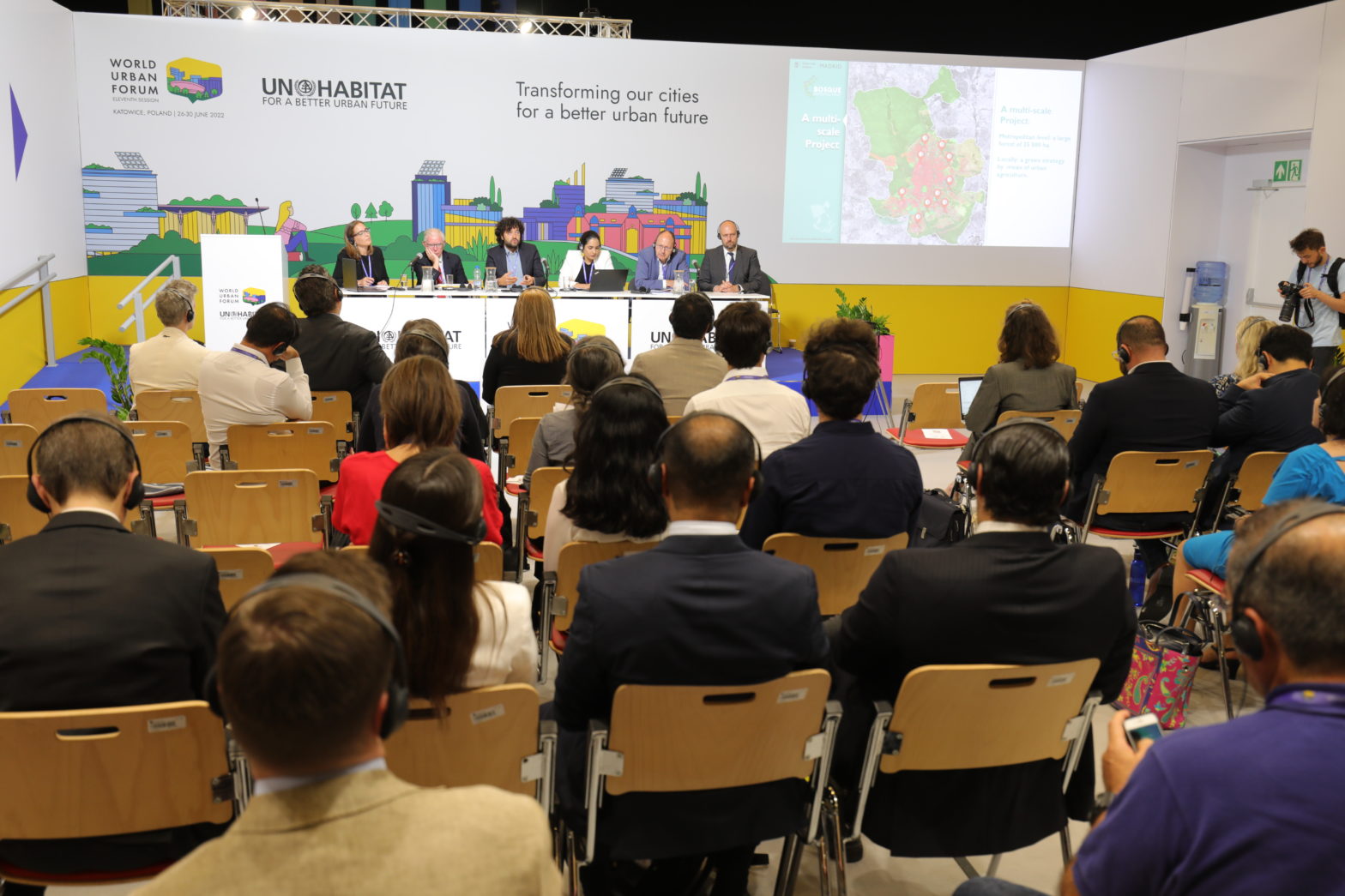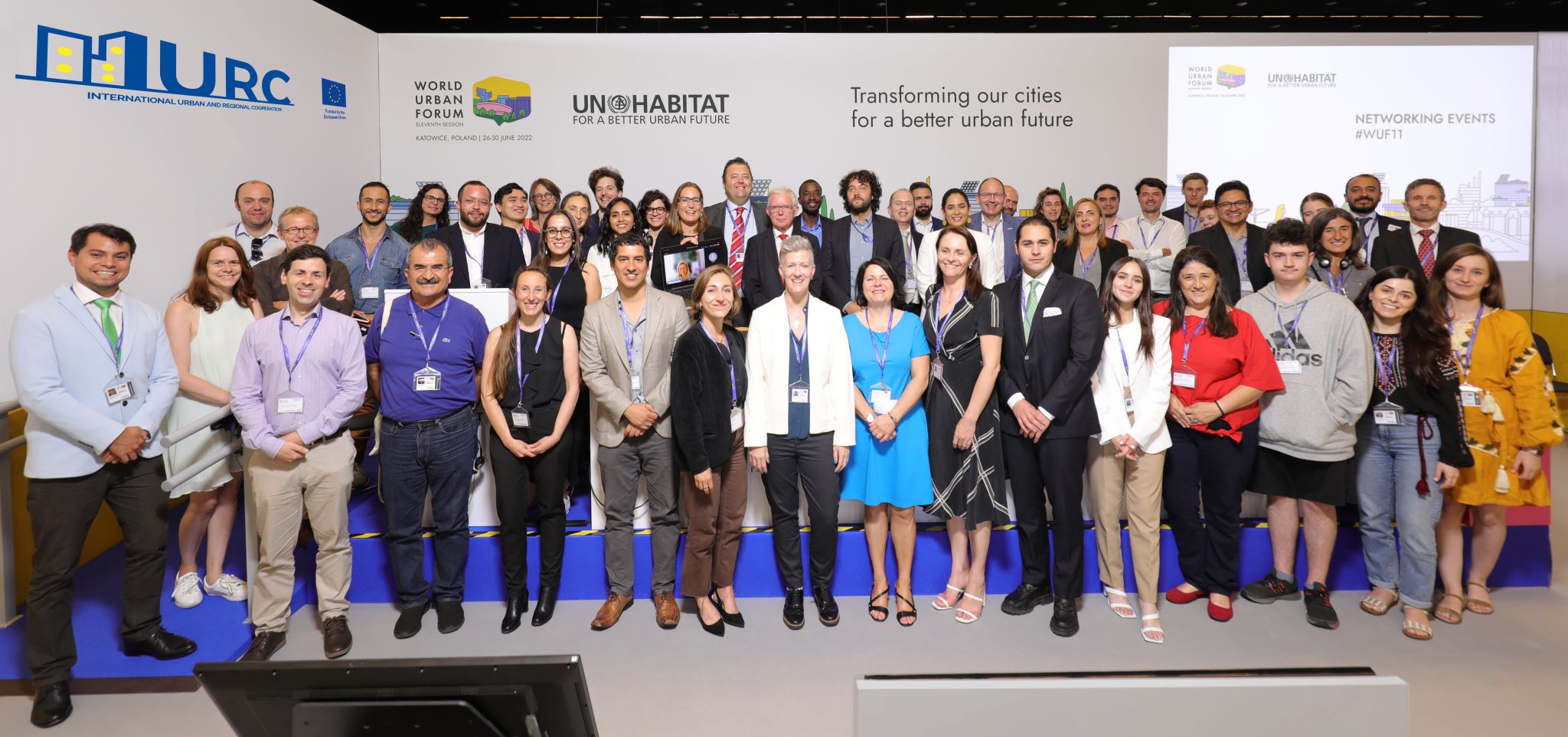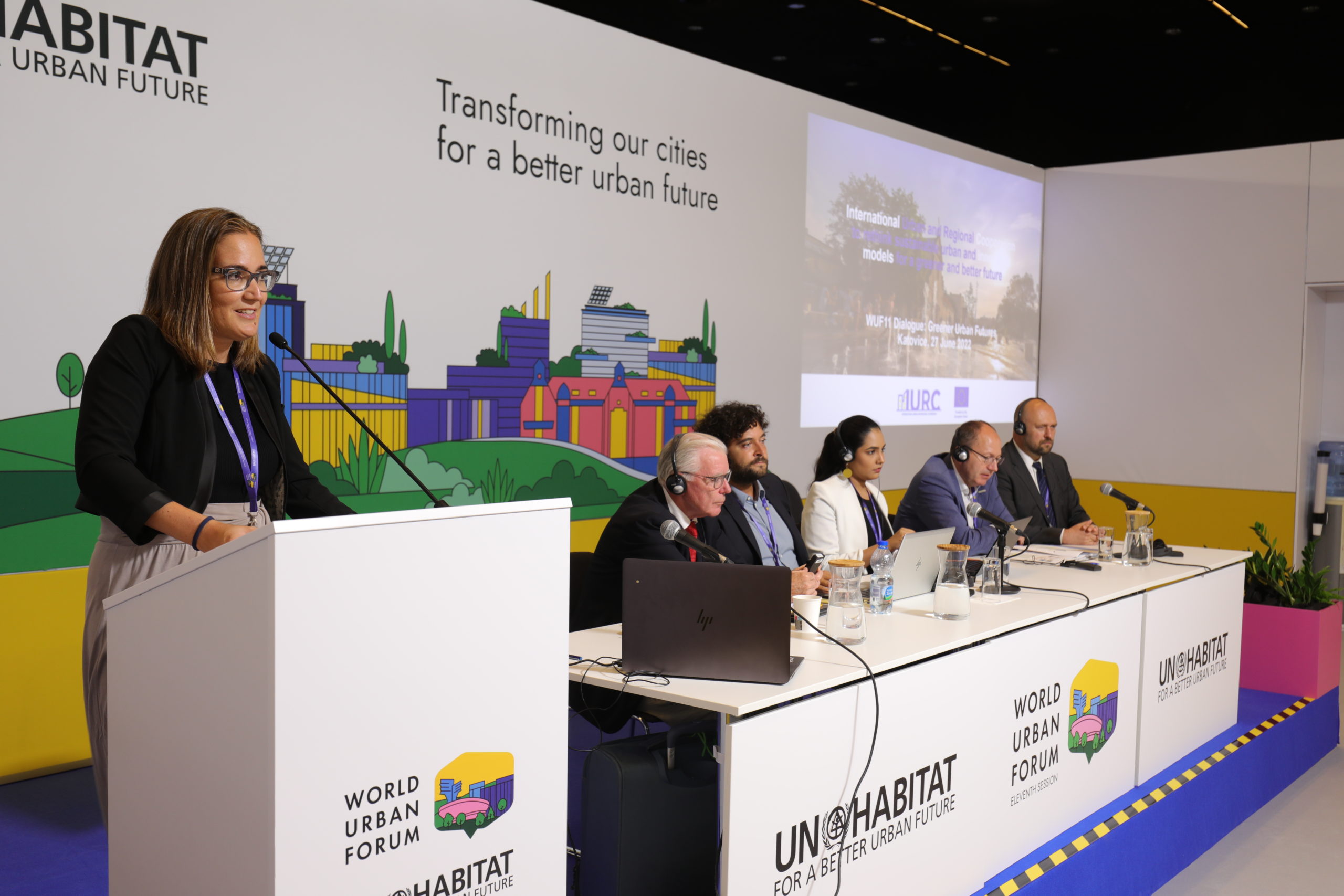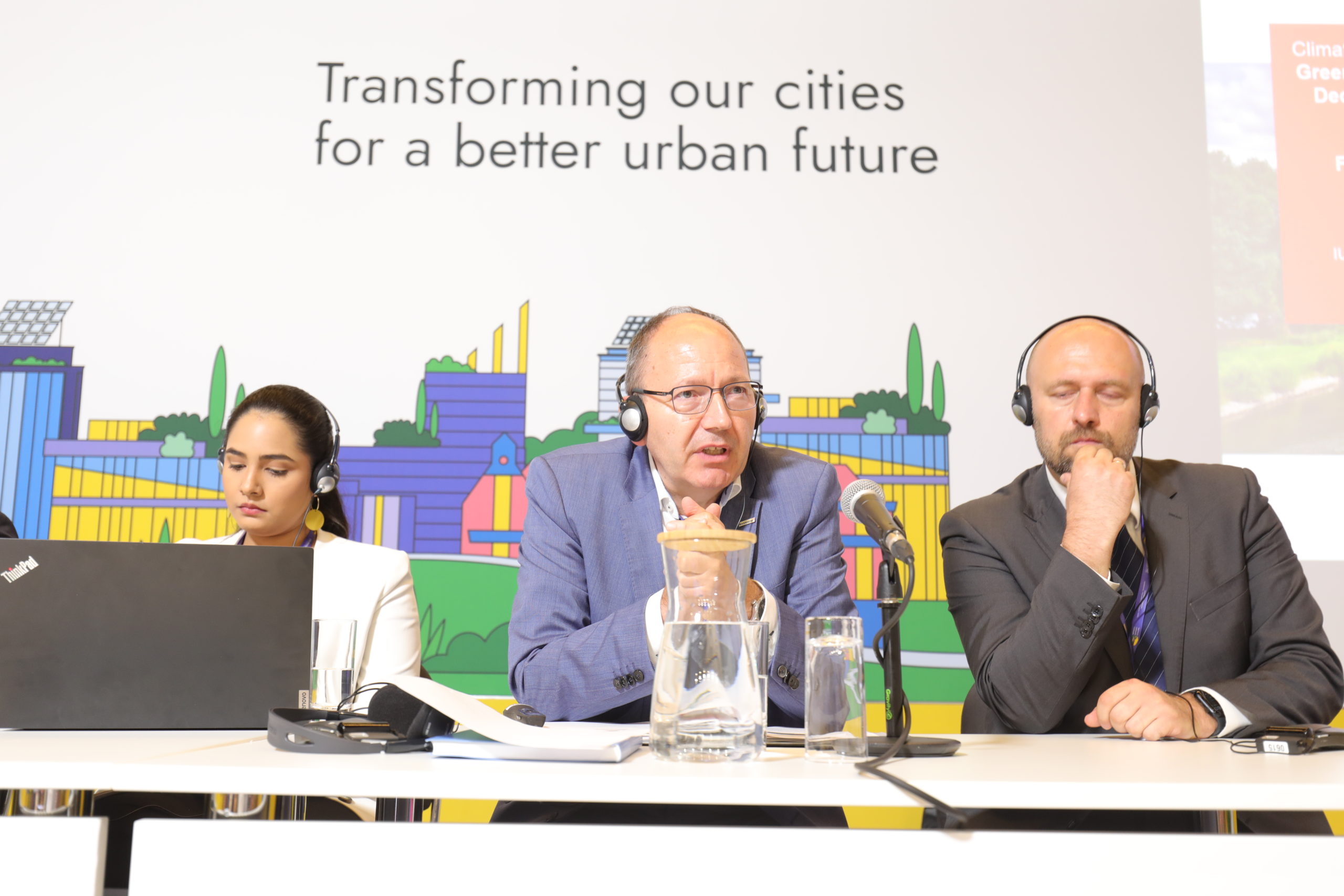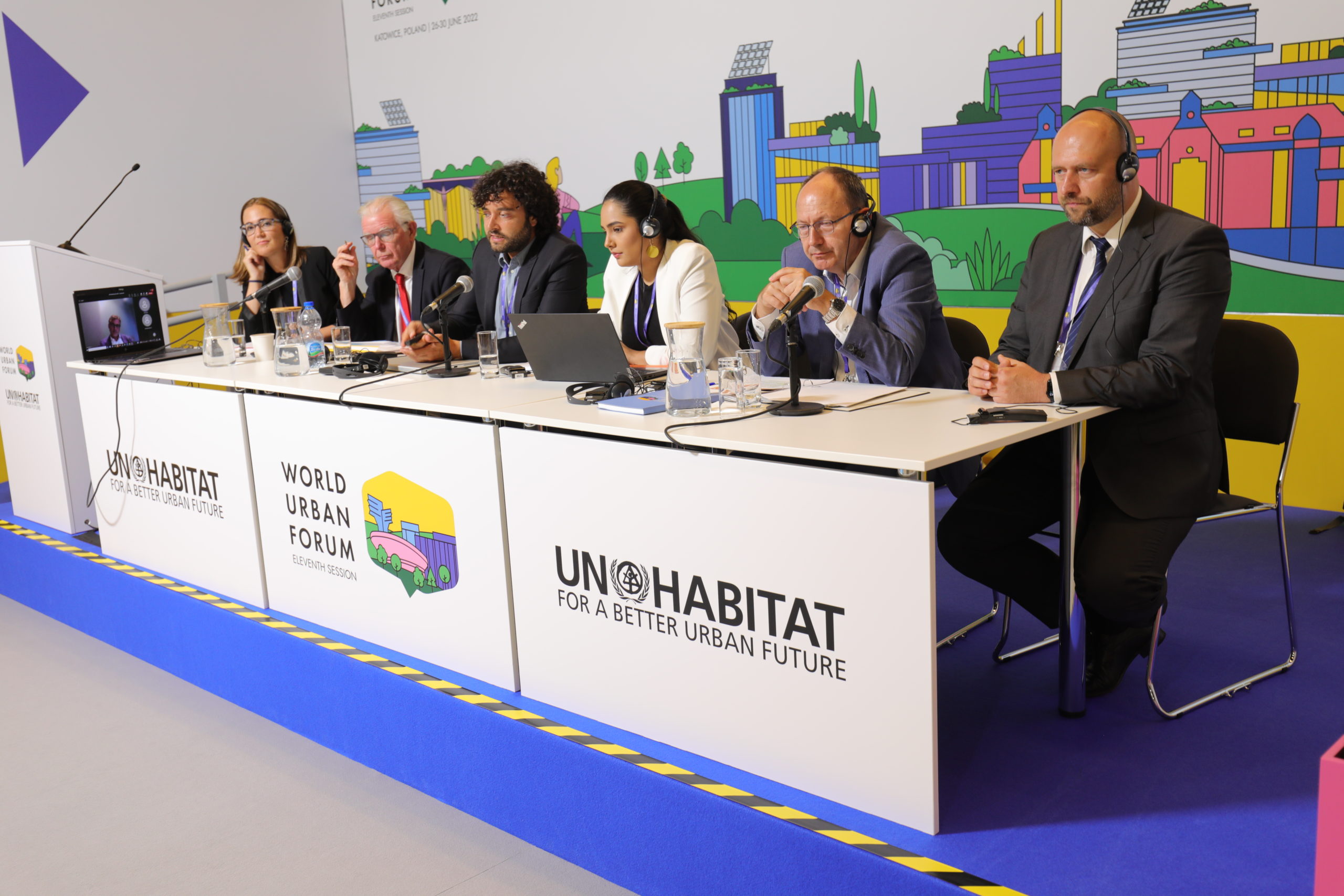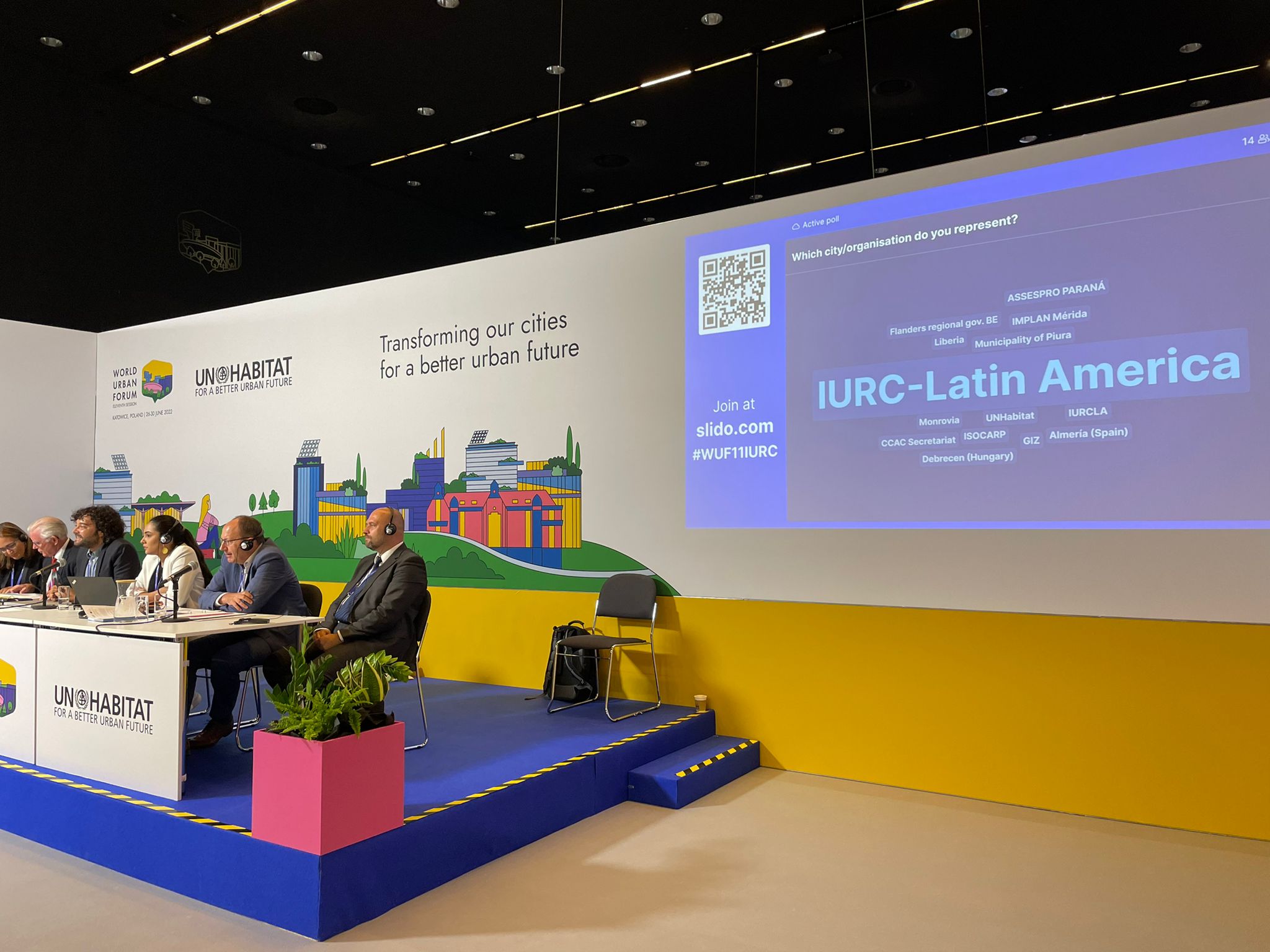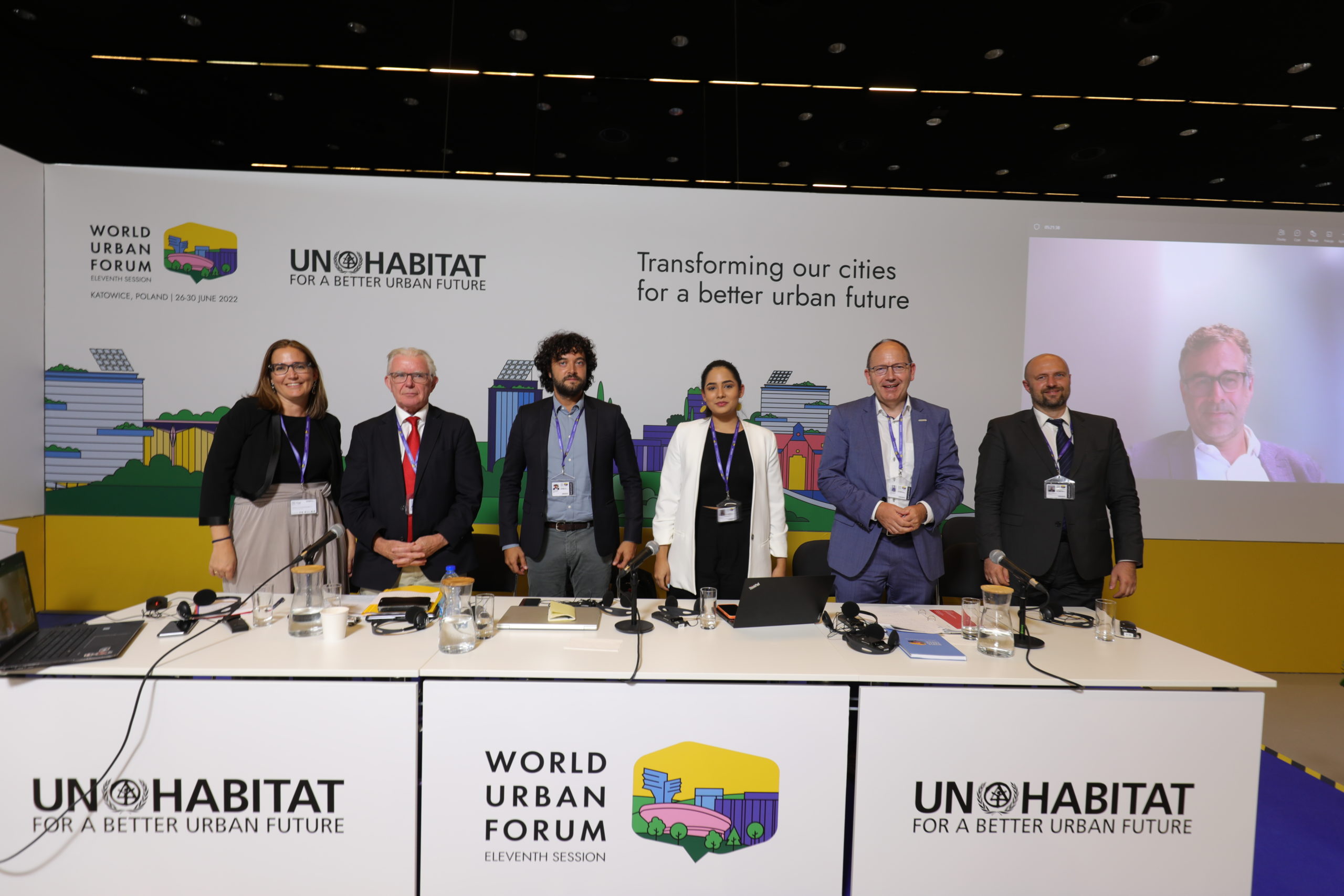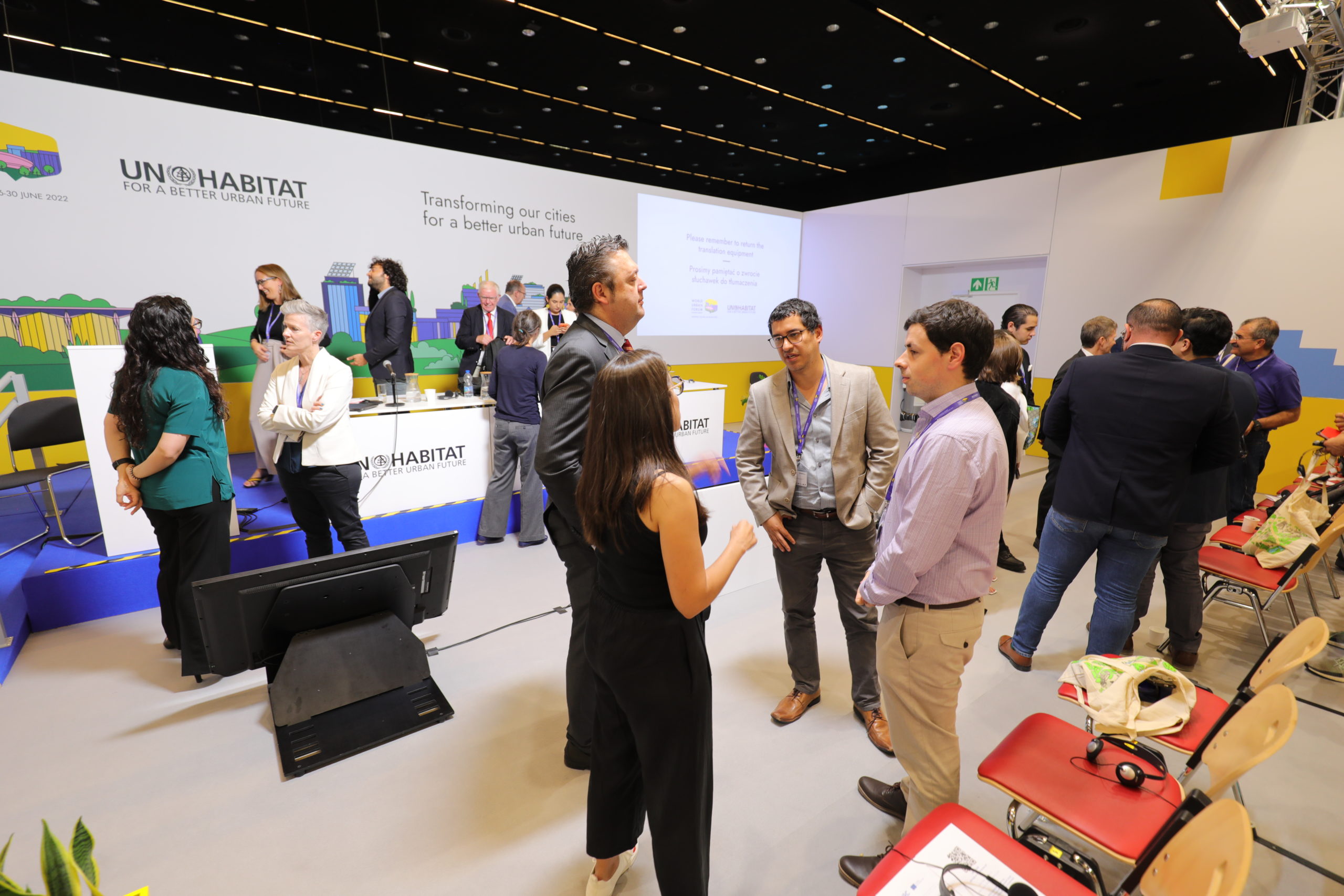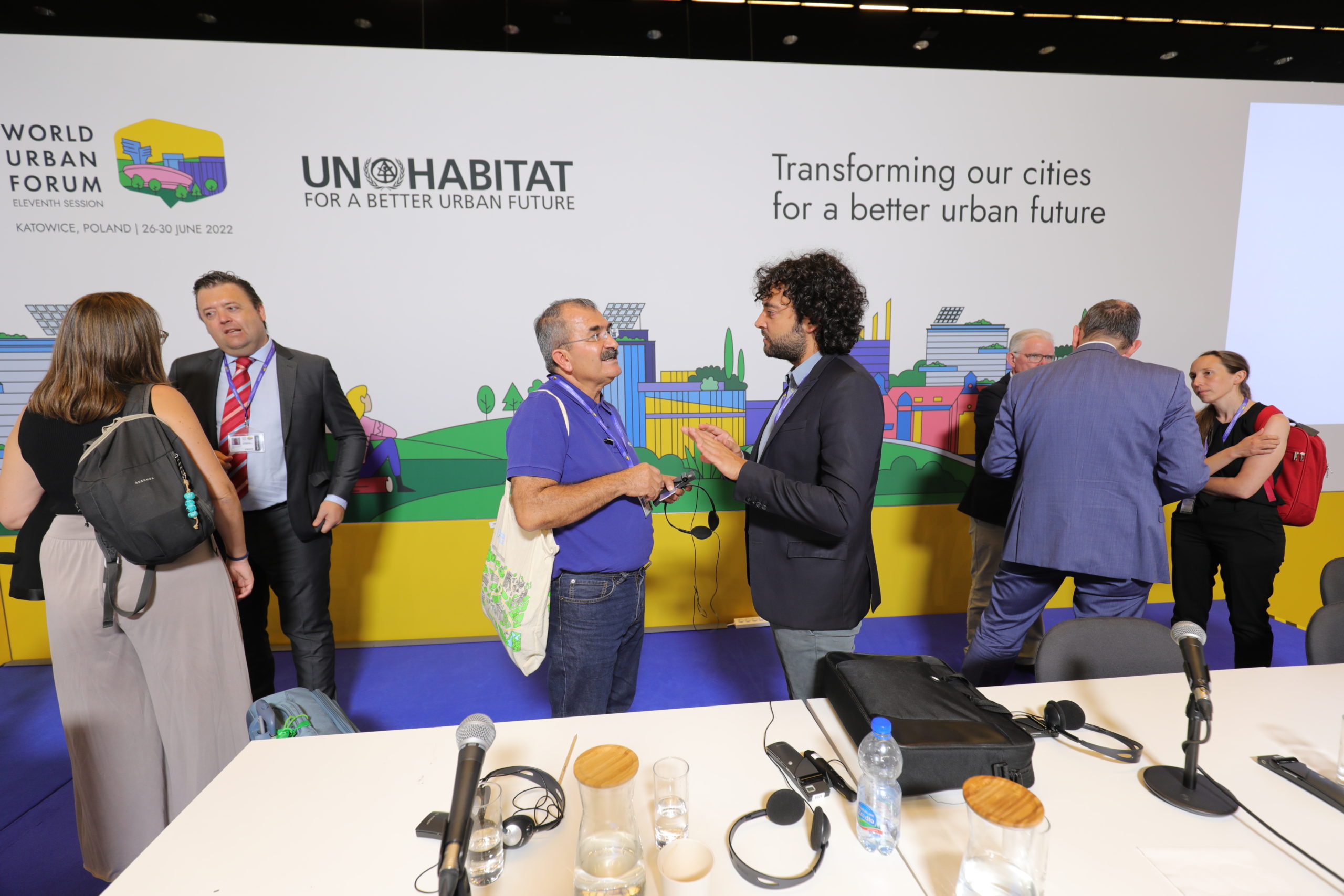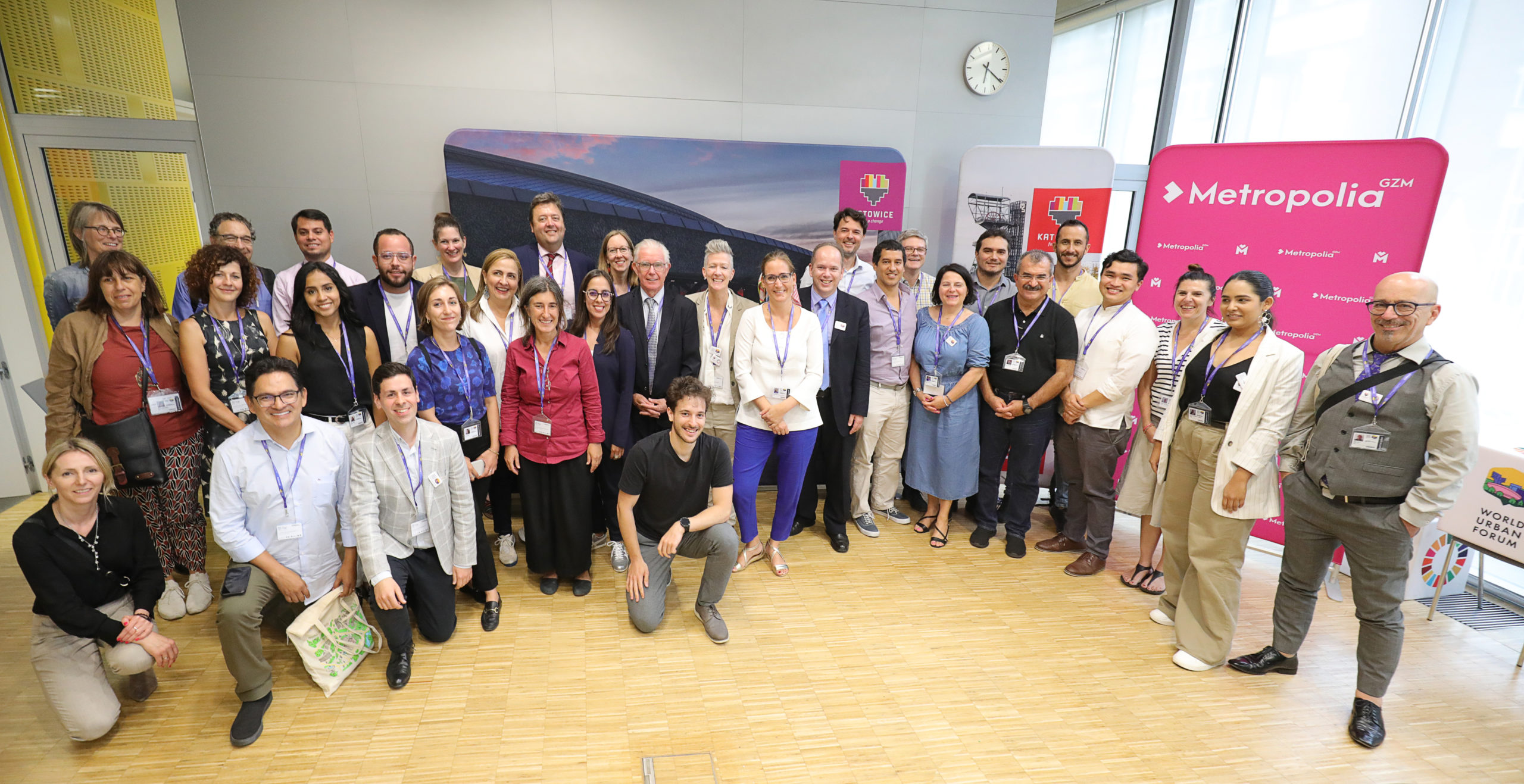The World Urban Forum is the premier global conference on sustainable urbanization where all key actors from the quadruple helix meet to transform our cities for a better urban future. Our IURC event was included in the Dialogue Greener Urban Futures highlighting the need of greener investment and sustainable consumption and production patterns.
Why this event?
Challenge identified: in the framework of International Urban & Regional Cooperation, the exchanges sometimes end up inspiring improvements in existing projects or even replicating a concrete pilot in a city or region. But there is a gap between the definition of these projects and the lack of funding or financing to implement them.
Objective of the session: we aimed at discussing how to improve the attractiveness of projects for private and public financing entities. What are the key factors that need to be incorporated, in what time of the project lifecycle, through which management systems? To answer these questions based on concrete examples, we invited three representatives from Mannheim, Madrid and Valle del Cauca Region to present their projects and two representatives from financial institution contributed to the session with their advice.
DG REGIO moderation: showing the support of the European Commission to the IURC programme and the objectives of this session, the session was faciliated by Dr. Roland Hall, Senior Advisor to the Directorate General for Regional and Urban Policy of the European Commission, Belgium.
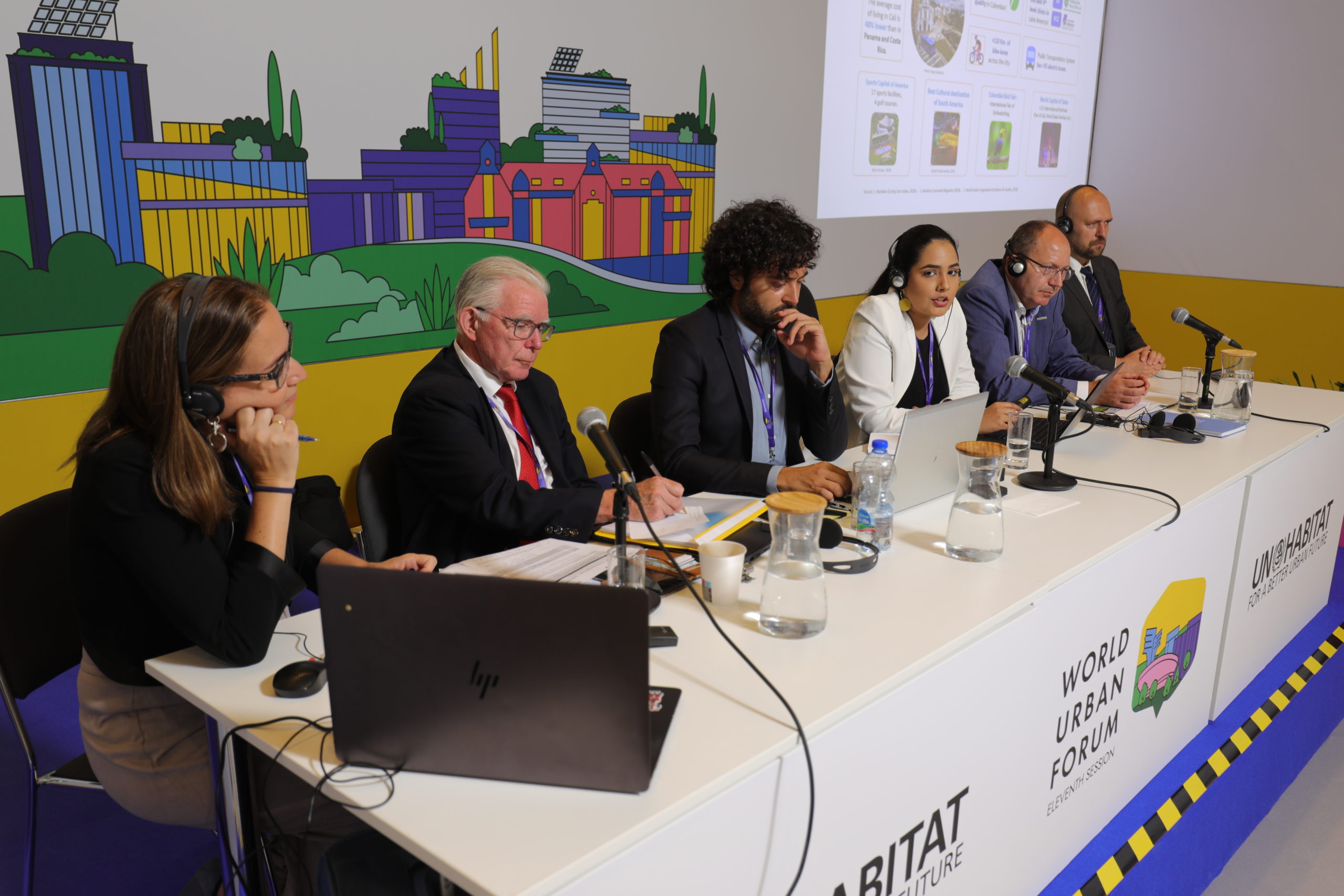
Our 3 case studies – 3 projects towards a greener future:
Christian Specht, First Deputy Mayor – Mannheim City Council, Germany, presented the city initiative on climate-neutral building stock by 2045: the Mannheim strategy to increase renovation rate, replace fossil-based heating, decentralize electricity production (photovoltaic), and increase greening of roofs & facades.
Sandra Susana Montoya Ramírez, Analyst for International Relations at Propacífico, presented Valle del Cauca Region Green infrastructure project – Ruta Verde. The project aims at boosting daily trips by bicycle and compatible modes contributing to air quality improvement while increasing road safety, reducing social inequality and spatial segregation in the Cali Metro Area (Colombia).
Nicolas Gharbi, Principal Advisor in the City Diplomacy and International affairs department at the Madrid City Council, presented Madrid Urban Forest: a 75 km. ring greening of public space restoring the land and its ecosystems. The urban forest aims at improving air quality, health, ecological and landscape recovery, and providing access to green areas for all, increasing pedestrian and bicycle paths.
Key Takeaways to improve the attractiveness of investment projects
Grzegorz Gajda, Senior Urban Sector Specialist in the Urban Advisory Division, Projects Directorate at the European Investment Bank (EIB), analysed each of the projects and outlined the following key messages:
Madrid – urban forest
- How does the project have access to land? The access to land has to be secured, before the project can go ahead.
The project has to be well defined and have high level of implementation readiness, but the project promoter, or borrower, has to be creditworthy and technically capable for the project to go ahead.
Grzegorz Gajda, European Investment Bank (EIB)
- How will the new urban forest be managed? Who will manage it? What will be their rights and obligations towards the new forest? Will the forest be open to the public, who will be able to benefit from the forest products (wood, forest fruits, etc.)?
Valle del Cauca Region – green routes
- What are the complementary facilities (mobility modes) that can motivate the use of the bike trails, for instance, a train line? (to consider EU model for the last-mile connection-bikes, pedestrian walking).
- Different municipalities with no formal institutional representation to work together is a disadvantage, maybe a common agreement between all involved municipalities establishing a unique governance mechanism, but also clearly deciding on each municipalities’ financial obligations towards the project could help.
Mannheim – district heating
- For this kind of project, technical questions are crucial. In addition to questions of feasibility of financing, the topics of implementation arrangements are the key.
Organization and governance are key. It will help to define scenarios.
Grzegorz Gajda, European Investment Bank (EIB)
- There are two types of final users in this type of projects. An owner of a private house can in theory obtain a mortgage loan. However, maybe not every private house owner will be creditworthy? Or, maybe there are other potential difficulties in technical implementation that need to be analysed more in detail?
- Regarding the multi-family buildings, the question is on the rate of improvements of energy efficiency parameters. If they will improve quickly, the district heating may no longer be attractive as a heating solution.
Salim Bensmail, Executive Director of The Urban Resilience Fund (TURF) at MERIDIAM followed the intervention from Grzegorz outlining that it is important to understand the difference between funding and financing. Who will pay the project in the long term? Equity investors and lenders only provide financing for initial investments. This must eventually be paid back so it is important to identify the long term funding sources of the project
Equity investors and lenders only provide financing for initial investments. This must eventually be paid back so it is important to identify the long term funding sources of the project.
Salim Bensmail, MERIDIAM
A second important point made by Salim was that equity investors should not be seen purely as providers of capital. They should be seen as a “development partner” with involvement in the design and implementation process. Choosing to mobilise equity investors means deciding to develop the project with a partner. The equity investor will bring a long term perspective and focus (15-25 years) participating in the whole project life cycle, with early investment. Needs to be understood as an added value that will bring specific and related knowledge to the project.
Salim stressed that: “Urban forest of Madrid or the green route of Cauca are largely public goods projects where long term funding will come primarily for public payments (and possibly private donations which are not investment per se). For such projects an availability – payment Public-Private Partnership (PPP) approach could work as the right model if it’s understood that the private investor has an added value to the delivery of the project. In the case of district heating of Mannheim there are economic flows and revenue streams that make it possible to consider a larger range of business models.”
City projects can be a challenge for equity investors because they are sometimes smaller than other infrastructure projects. . One option is to try to aggregate projects to reach a critical size. Sometimes platforms as third party investors are created to link public projects with private investors but there is a need of a critical mass before creating incentive mechanisms between private investors and cities (to think of tax reduction for retrofitting, etc.).
Challenges remain in terms of addressing urban infrastructure complexity and the capacity of cites to structure and bring projects to market, especially in areas such as energy transition where business models are often elusive.
Following the event, the IURC Latin America and North America delegations met together with representatives of the EU Commission and of the Foreign Policy Instrument during a Networking coffee organised by the IURC Central Coordination Service. The Networking coffee was kindly hosted by our partner Metropolis GZM, hence proving an opportunity for the delegations to further strengthen their collaborations.
